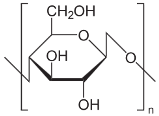Adaptation
 Adaptations
are features and behaviors that have been selected
for, and favored through evolution. They
usually assist in the competition over nutrient
acquisition, reproduction, defense and survival in general.
For example, cheetahs developed speed for more
effective
hunting.
Adaptations
are features and behaviors that have been selected
for, and favored through evolution. They
usually assist in the competition over nutrient
acquisition, reproduction, defense and survival in general.
For example, cheetahs developed speed for more
effective
hunting.
Fungi were historically classified under the Kingdom Plantae
because of their immobility, somewhat similar morphological
traits, and growth habits. However upon closer inspection,
it was discovered that fungi are
 more similar to animals than
plants! This might seem odd at first, but the adaptations that
fungi have developed, in regards to nutrient acquisition and
structural material, are more comparable to many animals than
plants. First off, fungi, along with animals, are
heterotrophic (other feeder), whereas most plants conduct
photosynthesis and are autotrophic (self feeder). By developing
the ability to use organic material for nutrients and energy,
fungi were liberated of the tie to sunlight and carbon dioxide,
ultimately allowing the exploitation of new untouched habitats
and niches, like underground and inside hollow
more similar to animals than
plants! This might seem odd at first, but the adaptations that
fungi have developed, in regards to nutrient acquisition and
structural material, are more comparable to many animals than
plants. First off, fungi, along with animals, are
heterotrophic (other feeder), whereas most plants conduct
photosynthesis and are autotrophic (self feeder). By developing
the ability to use organic material for nutrients and energy,
fungi were liberated of the tie to sunlight and carbon dioxide,
ultimately allowing the exploitation of new untouched habitats
and niches, like underground and inside hollow trees. The
evolution of hyphae was extremely vital in their heterotrophic
lifestyle, to learn more about hyphae, read the
nutrition section. Secondly,
mushrooms produce chitin as a means of support, along with
most arthropods like spiders, and insects, and crustaceans.
Conversely, plants produce cellulose as their means of support.
Both have similar molecular structures, chitin on the left, and
cellulose on the right, and were vital in the classification of
fungi and other organisms.
trees. The
evolution of hyphae was extremely vital in their heterotrophic
lifestyle, to learn more about hyphae, read the
nutrition section. Secondly,
mushrooms produce chitin as a means of support, along with
most arthropods like spiders, and insects, and crustaceans.
Conversely, plants produce cellulose as their means of support.
Both have similar molecular structures, chitin on the left, and
cellulose on the right, and were vital in the classification of
fungi and other organisms.

Another unique adaptation of
Coprinopsis atramentaria is the ability to
deliquesce
(click to learn more) through the rare characteristic of
auto-digestion, also known as going inky.
Now that you're learning a little more about this mushroom, it's about time to figure out how it feeds, click here.
